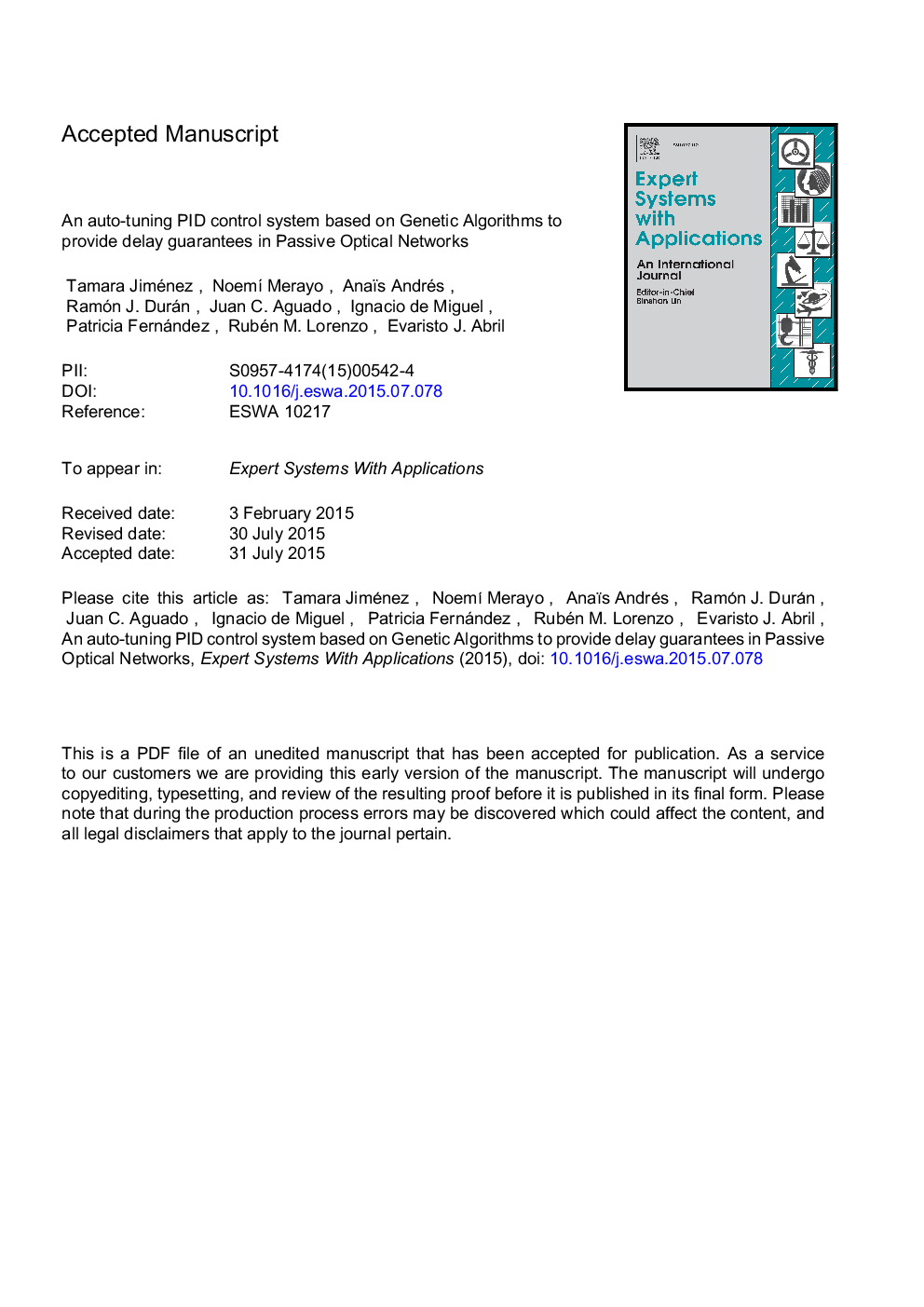| Article ID | Journal | Published Year | Pages | File Type |
|---|---|---|---|---|
| 10322159 | Expert Systems with Applications | 2015 | 16 Pages |
Abstract
Passive Optical Networks (PONs) are the most important access architectures since their deployment is massive all around the world. However, the QoS (Quality of Service) and the efficient management of the network resources have become the key point, especially with the new emerging services and applications. In particular, the delay and the bandwidth are becoming important limiting factors for the user experience. As a consequence, in a previous research we proposed the implementation of PID (Proportional-Integral-Derivative) control strategies to manage these networks parameters in PONs, demonstrating higher efficiency and more robustness than other previous existing algorithms. It is worth emphasizing that this is the first time to apply this control strategy in PONs access networks. However, in this paper we improve the PID control strategy by automating the tuning process with a genetic algorithm. Indeed, we have developed a novel automatic tuning technique based on genetic algorithms to tune a P controller that provides delay guarantees. Simulation results show that the control strategy reduces the tuning time up to 64% in comparison with the Ziegler-Nichols manual technique (ZN). On the other hand, it is demonstrated that our proposal is more accurate and robust that ZN since the genetic algorithm automatically evolves to the best solutions of the tuning parameters in contrast to the manual experiments required for the ZN method. Furthermore, we have complemented the use of the P controller with a new dynamic Admission Control (AC) module. This module implements a policy to selectively transmit or drop packets and leads a better delay control. The simulation analysis reveals that the real time evolution of the delay with the dynamic AC is more stable when compare to a conventional and simple fixed AC, reaching differences near one order of magnitude in the delay fluctuations.
Keywords
Related Topics
Physical Sciences and Engineering
Computer Science
Artificial Intelligence
Authors
Tamara Jiménez, Noemà Merayo, Anaïs Andrés, Ramón J. Durán, Juan C. Aguado, Ignacio de Miguel, Patricia Fernández, Rubén M. Lorenzo, Evaristo J. Abril,
